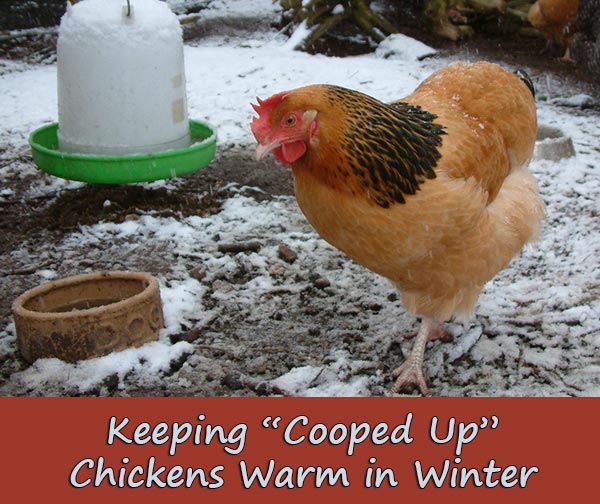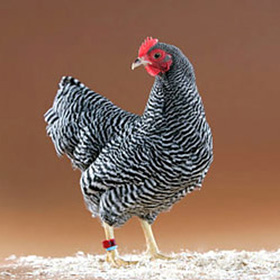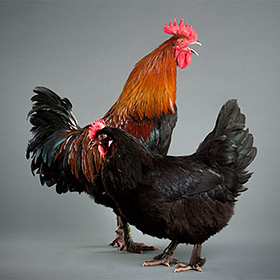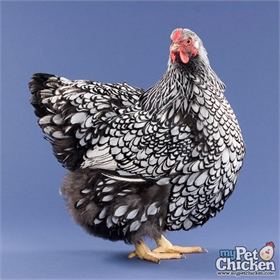Keeping “Cooped Up” Chickens Warm in Winter

Funny thing about chickens is that they seem always to be the “butt” of jokes. Everyone is always making “chicken jokes” – poor things. I live smack dab in the middle of the state of Nebraska – the prairie, and chickens are plentiful. This in spite of the often sub-zero temperatures and bitter wind chills. So it’s clear that the chicken raisers must know how to keep their broods warm on a cold Nebraska – well, day and night actually. Almost everyone you know here in “outstate” Nebraska raises chickens knows someone who raises chickens, or knows someone who knows someone – who raises chickens.
Needless to say, when I started to think about writing this article, I thought I should get some first-hand advice. I started out with my older friend David. He asked me what I was writing about and I told him – keeping chickens warm in the winter. Without beating an eye, he said – in a pressure cooker. I never see it coming! Then I called my sister, and she asked the same thing. Again, I told her that I was finding ways to keep chickens warm in the winter. With a grin, she said – get them a rooster. Before I could even say – oh my word! – she said – get them a fox “stole.” It was becoming ridiculous, so I decided just to do my own research.
I too know several people who raise chickens, so I asked my real chicken raising friend Tom Hall from Axtell, Nebraska. Tom raises Rhode Island Red chickens, which originally came from Massachusetts and Rhode Island. The University Of Oklahoma Department Of Animal Science says that, “Rhode Island Reds are a good choice for the small flock owner. Relatively hardy, they are probably the best egg layers of the dual-purpose breeds.
Reds handle marginal diets and poor housing conditions better than other breeds and still continue to produce eggs.” So it seems that Tom made a good choice for cold Nebraska weather. Tom says that he uses “one incandescent bulb for every 100 sq. of coop, and he leaves the light on during the night. This keeps the coop cozy, and it keeps the chickens active all night which also keeps them warmer.”
Winter Hardy Breeds
Knowing what type of chickens to breed for winter weather is your first consideration. My friend Tom has a popular breed, but you may want something a bit different, or something that better fits your area. The website, www.mypetchicken.com has great suggestions with photos and prices. Here are a few that they suggest with a photo and the site’s description:
Barred Plymouth Rock Bantam

Barred Plymouth Rocks or “Barred Rocks,” as they’re called, are one of the most popular dual-purpose chickens on small farms today, and this bantam variety is as sweet as can be. The heritage of the breed is unclear with reports of different crosses, but what is clear is that they’re very friendly, great layers of brown eggs and fairly cold hardy for a bantam. Though they tolerate confinement, they’re most happy when they get to range freely.
Black Copper Marans

We’re beyond excited to be able to offer you this breed. [Especially cold hardy,] they lay the darkest egg we could find: a deep, rich, chocolate brown. For those of you who favor colorful eggs, this breed is a must-have! Marans make wonderful pets, too – they are hardy, calm and quiet, and bear confinement well.
Silver Laced Wyandotte

Silver Laced Wyandottes are the original Wyandotte variety, and a wonderful example of American breeding. They are beautiful and productive.
Wyandottes are a favorite amongst backyard flock owners for their dependable egg laying, easygoing nature and cold hardiness. Each feather is silvery white edged in beetle black, similar to Silver Sebrights. The hens look as if they’re ladies dressed for a fancy ball! The Wyandotte roosters have the same-laced feathers, but their hackles and capes are composed of glimmering silver, like a suit of armor. (We think roosters should be named after the Knights of the Round Table!)
Wyandottes have a heavy body and small rose comb which makes this breed perfect for cold climates because they are not prone to frostbite. The hens are hardy, energetic, and faithful layers.
“Baby it’s cold outside” Keeping Your “chicks” Warm
Ok – sorry – I couldn’t help myself with the “chick” joke, but seriously, once you’ve chosen your favorite coldhardy chickens, then you must build a coop, and it needs to keep these babies warm.
Jill Winger – a fellow Nebraskan and a raiser of chickens is an excellent resource for keeping your brood warm in the winter. Here are some of her suggestions:
- Air-tight coop:
Replace storm windows and repair any problems that have cropped up over the summer. If the roof leaks, we fix it.
- Try deep litter:
Have you heard of the deep litter method of chicken coop management? If it’s new to you, you might want to read this excellent article by Harold Ussery in Backyard Poultry magazine. This method puts the microorganisms in the chicken coop to work. The nitrogen in the chicken droppings feeds these bitty bugs, breaking down the carbon and creating compost for your spring garden. In addition, deep litter is cozy.
- A Winter Yard:
Take the deep litter method outside. First, make the chickens’ yard as diverse as possible to encourage them to spend plenty of time outside. It’s easy. As you do your fall clean-up, pile cornstalks, tomato vines, bark from your summer woodcutting, and coarse brush into the chicken yard. You can also add fall grass clippings, wood chips, and any other organic matter, until there’s a thick pile for them to pick through. If it’s thick enough, there’ll be bugs, worms, and soil-line critters at the bottom for them to discover all winter long, and they’ll delight in the organic matter to pick through.
The fundamental concept to all of this is to choose well, know what chickens need, and provide well for those needs. Chickens like to eat bugs and grains, and they like to peck around finding food. They also like cozy nests, so if you follow the advice from these real chicken-raising folks, you’ll soon find yourself with an entire brood of cozy, warm, well cared for chickens. By the way, my favorite chicken joke is commensurate with the “activistto-the-core” person I am.
 Home and Gardening Ideas At home and Gardening ideas we believe inspiring readers about homesteading, self sufficiency
Home and Gardening Ideas At home and Gardening ideas we believe inspiring readers about homesteading, self sufficiency





